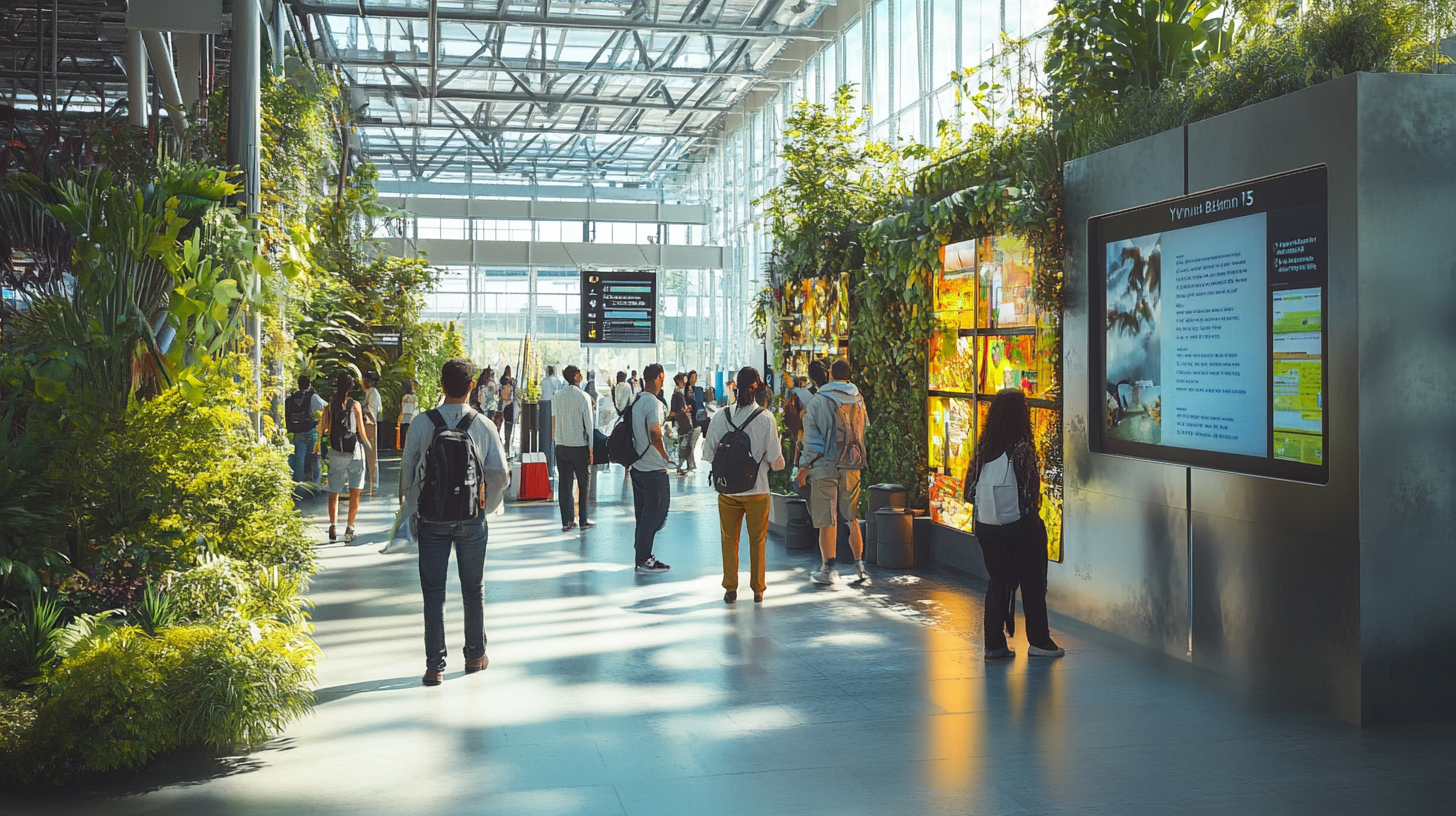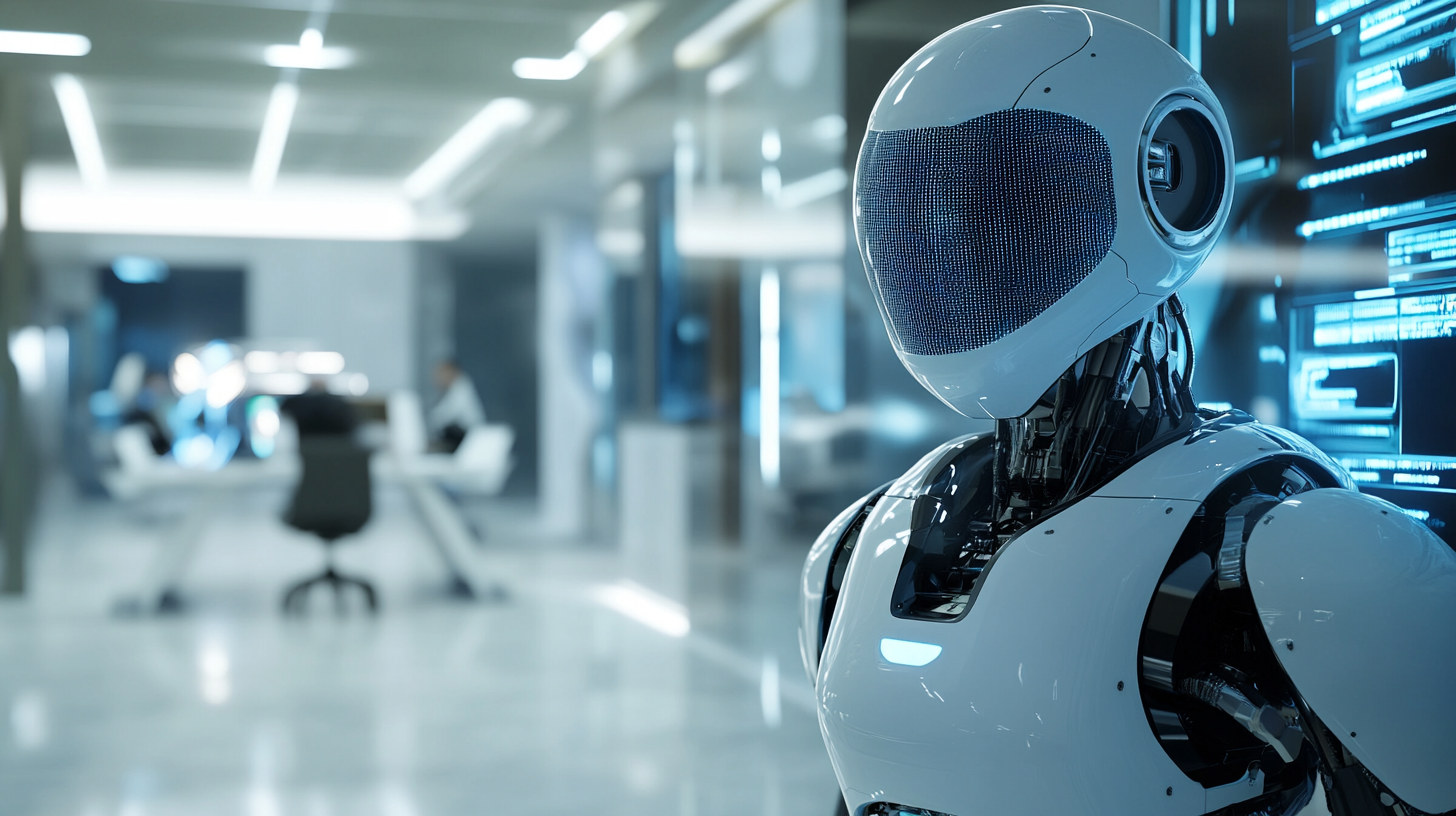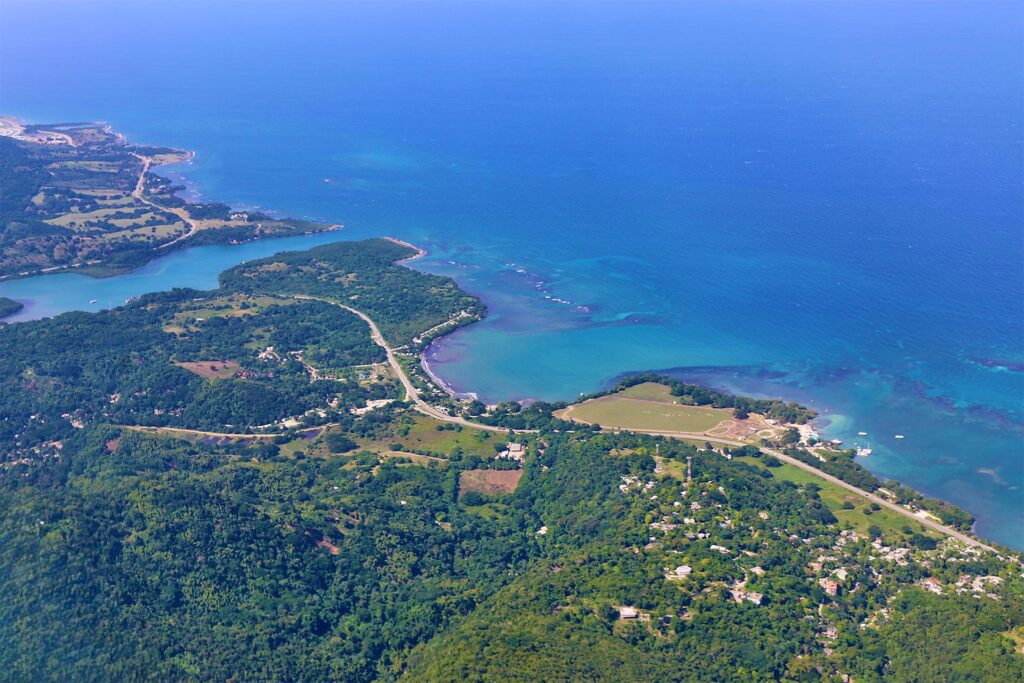
A Year In Review: Eco-Friendly Flying Trends in 2024
The aviation industry soared to unprecedented heights in 2024, heralding a new era of sustainable air travel. With a global commitment to combating climate change, airlines, aircraft manufacturers, governments, and passengers united to revolutionize aviation’s environmental impact. This year marked a pivotal shift towards eco-friendly flying, propelled by groundbreaking technologies, strategic alliances, and an escalating demand for greener skies.
Embracing Sustainable Aviation Fuels (SAFs)

Among the most transformative eco-friendly trends was the widespread adoption of sustainable aviation fuels (SAFs). Major airlines, including British Airways and United Airlines’ Investment in Sustainable Aviation Fuels, invested heavily in SAFs, acknowledging their potential to significantly reduce carbon emissions.
These biofuels, derived from renewable resources like agricultural waste, used cooking oil, and algae, offered a greener alternative to conventional jet fuels, directly contributing to the industry’s ambitious goal of achieving net-zero emissions by 2050. The practical implementation of SAFs transcended theoretical commitments. Airlines integrated SAFs into their daily operations, leading to measurable decreases in carbon footprints. For instance, British Airways reported a 15% reduction in emissions on flights utilizing a SAF blend, setting a new industry benchmark.
This shift was bolstered by government incentives and partnerships with fuel producers, such as Collaborative Ventures Between Airlines and Biofuel Companies, accelerating the transition to cleaner energy sources.
Despite these advancements, challenges remained in scaling SAF production to meet global demand. Significant investments poured into research and development, aiming to enhance efficiency, improve feedstock sustainability, and reduce production costs. The industry recognized that overcoming these hurdles was essential for the long-term viability of eco-friendly flying. Consequently, collaborative efforts intensified, involving airlines, fuel producers, policymakers, and regulatory bodies to streamline certification processes, standardize regulations, and foster innovation.
Passenger engagement played a crucial role in this green transformation. Travelers increasingly preferred airlines committed to sustainability, influencing the market dynamics. This consumer behavior encouraged more airlines to invest in SAFs and highlighted the growing public interest in environmental responsibility. The trend signified a collective movement towards a greener future, with SAFs at the forefront of eco-friendly aviation solutions.
Technological Innovations: Electric and Hybrid Aircraft

Technological advancements further propelled eco-friendly flying trends in 2024. The aviation industry witnessed significant progress in developing electric and hybrid aircraft, promising a substantial reduction in carbon emissions and noise pollution. Companies like Airbus and Boeing unveiled prototypes of electric planes designed for short-haul flights, showcasing the potential of clean energy in aviation.
Notably, the Airbus Zero-Emission Aircraft Initiative demonstrated viable pathways toward zero-emission commercial flights by 2035. Hydrogen-powered aircraft also emerged as a feasible and exciting option. Several successful test flights, such as those conducted by ZeroAvia, demonstrated the practicality of hydrogen fuel cells in generating electricity for propulsion, emitting only water vapor and heat.
The European Union invested heavily in hydrogen technology through initiatives like the Clean Aviation Joint Undertaking, aiming to integrate such aircraft into commercial fleets by the late 2030s.
Moreover, autonomous flight systems enhanced efficiency and safety, contributing to eco-friendly operations. Artificial intelligence (AI) and automation facilitated optimized flight paths, reduced fuel consumption, and minimized delays. Airlines adopted predictive maintenance using AI and Internet of Things (IoT) technologies, which not only improved safety but also enhanced operational efficiency by anticipating technical issues before they occurred.
The implementation of AI-Driven Flight Optimization Systems exemplified how technology could bridge the gap between operational efficiency and environmental sustainability.
The renaissance of supersonic travel, powered by sustainable fuels and equipped with quieter engines, was another highlight. Companies like Boom Supersonic worked on developing aircraft, such as the Boom Supersonic’s Overture Aircraft, that could halve transatlantic flight times while adhering to stringent environmental standards. These innovations indicated a future where speed and sustainability coexisted, reshaping passenger expectations and experiences while maintaining a commitment to environmental stewardship.
Strategic Shifts: From Air to Rail in Europe

In Europe, a significant eco-friendly trend was the strategic shift from air to rail travel for short distances. Environmental concerns and regulatory pressures led airlines to partner with rail services, offering integrated travel solutions. For example, Air France-KLM collaborated with SNCF, the French national railway company, to provide seamless connections between flights and high-speed trains. Similarly, Deutsche Bahn expanded its Rail&Fly Program with Airlines, enhancing connectivity between air and rail networks.
This move was driven by policies limiting short-haul flights where efficient rail alternatives existed, aiming to reduce carbon emissions associated with domestic air travel. Passengers benefited from efficient scheduling, combined ticketing systems, and reduced travel times, enhancing convenience while contributing to sustainability efforts. The partnership models demonstrated how the industry adapted to changing regulatory landscapes and environmental imperatives, aligning economic objectives with ecological responsibilities.
Airlines also invested in virtual interlining and AI for predictive analysis to manage geopolitical disruptions effectively. Technologies like AI-Powered Route Optimization Tools optimized routes and schedules, ensuring operational resilience and flexibility. By embracing multimodal transportation options, the industry addressed both environmental goals and customer satisfaction, reflecting a comprehensive and forward-thinking approach to sustainable travel.
This shift encouraged other regions to consider similar strategies, recognizing the importance of integrating different modes of transportation to reduce the overall carbon footprint. It showcased a collaborative effort between airlines, rail companies, governments, and passengers to promote eco-friendly travel options, setting a precedent for future initiatives and policy developments.
Airlines and Travelers Collaborate for Sustainability

The success of eco-friendly flying in 2024 was also attributed to the dynamic collaboration between airlines and travelers. Airlines implemented green initiatives such as reducing single-use plastics, enhancing recycling programs, and investing in energy-efficient aircraft. For instance, several carriers introduced fleet upgrades to models like the Airbus A350 and Boeing 787 Dreamliner, known for better fuel efficiency and lower emissions. The adoption of the Airbus A350’s Fuel-Efficient Technology underscored the industry’s commitment to sustainable operations.
On the other hand, travelers made conscious choices that directly impacted sustainability efforts. Opting for non-stop flights reduced takeoff and landing emissions, while packing light minimized fuel consumption due to weight reduction. Many passengers participated in carbon offset programs, often facilitated by the airlines themselves, to compensate for their travel emissions. Programs like Gold Standard Carbon Offset Initiatives provided credible platforms for passengers to offset their carbon footprint effectively.
Incentives played a significant role in encouraging sustainable choices. Airlines offered loyalty points, discounts, or exclusive services to passengers who demonstrated eco-friendly behaviors. For example, some airlines introduced Green Loyalty Programs Rewarding Sustainable Travel, which not only promoted environmental responsibility but also enhanced customer engagement and loyalty.
These initiatives reflected the industry’s recognition that environmental sustainability and customer satisfaction are mutually reinforcing objectives. The joint efforts highlighted a strong industry commitment to sustainability. It emphasized that achieving environmental goals was a shared responsibility, requiring active participation from both service providers and consumers. This synergy was crucial in driving the momentum towards greener skies and fostering a culture of environmental stewardship within the aviation community.
Sustainability Trends Beyond Aviation

The eco-friendly flying trends were part of broader sustainability movements observed in 2024. Industries worldwide embraced practices like regenerative agriculture, sustainable water management, and Environmental, Social, and Governance (ESG) integration. Companies like Nescafé’s Regenerative Agriculture Initiative and Carlsberg’s Water Conservation Efforts led initiatives in promoting regenerative practices and water conservation within their supply chains, setting industry standards for sustainable operations.
In the financial sector, institutions like HSBC invested heavily in green bonds and green finance, supporting environmental projects and sustainable business models. The issuance of HSBC’s Green Bonds for Environmental Projects exemplified how finance could facilitate the transition to a low-carbon economy.
The concept of the circular economy gained traction, encouraging reuse and recycling to minimize waste. This movement influenced manufacturers, including those in the aviation industry, to adopt eco-friendly processes such as Boeing’s Aircraft Recycling Programs, reducing environmental impact throughout the product lifecycle.
Technological advancements also supported sustainability efforts. Google’s development of Nature Intelligence Software for Environmental Management aided in disaster prevention and environmental monitoring. Such innovations demonstrated the integration of technology and sustainability, offering tools to address environmental challenges effectively and proactively.
These trends underscored an increasing awareness and commitment to environmental responsibility across various sectors. The aviation industry’s eco-friendly initiatives were part of this global shift towards sustainability, reflecting a collective effort to create a more sustainable future. The convergence of technology, finance, and environmental policy illustrated how interdisciplinary approaches are essential in addressing complex environmental issues.
The Role of AI and Predictive Technologies

Artificial intelligence played a pivotal role in advancing eco-friendly flying in 2024. Airlines utilized AI for improved customer service, flight delay predictions, and enhancing overall customer experiences through digital technologies. Predictive analytics enabled more efficient flight operations, optimizing fuel usage and minimizing environmental impact. The deployment of AI-Based Predictive Maintenance Systems was instrumental in preemptively identifying potential mechanical issues, thereby reducing unnecessary fuel consumption and emissions.
The adoption of AI extended to maintenance operations, where predictive maintenance improved safety and efficiency. By analyzing data from sensors and systems, airlines could proactively address potential issues, reducing downtime and preventing delays. This not only enhanced operational efficiency but also contributed to sustainability by ensuring optimal aircraft performance and reducing waste.
The use of IoT-Enabled Smart Aircraft Systems exemplified how interconnected technologies could drive significant environmental benefits. AI and blockchain technologies were also leveraged for trip support services, facilitating seamless connectivity and personalized services. These advancements improved passenger experiences while supporting eco-friendly practices by streamlining operations and reducing resource consumption.
The integration of Blockchain for Transparent Carbon Emission Tracking provided passengers with verifiable information about their environmental impact, fostering trust and encouraging informed choices. The integration of AI reflected an industry-wide trend towards digital evolution. Embracing technology enabled airlines to make data-driven decisions, optimize operations, and enhance sustainability efforts, all of which were essential in navigating the dynamic aviation landscape of 2024. The synergistic relationship between technology and sustainability highlighted the potential for innovation to address environmental challenges effectively.
Insights from the Sustainable Aviation Outlook Report 2024

The Sustainable Aviation Outlook Report 2024 by SimpliFlying provided invaluable insights into the industry’s journey towards net-zero emissions amid the climate crisis. The report examined current sustainability efforts, challenges, and strategies, highlighting the critical focus on sustainable aviation fuels and emerging technologies like hydrogen and electric power. It emphasized the importance of initiatives such as the International Air Transport Association’s (IATA) Net-Zero Carbon Commitment in guiding industry actions.
One of the key takeaways was the importance of collaboration across the industry. Airlines, manufacturers, governments, and regulators needed to work together to overcome barriers and accelerate the adoption of sustainable practices. The report emphasized investing in innovation and empowering sustainability teams to drive change effectively. It also highlighted initiatives like the World Economic Forum’s Clean Skies for Tomorrow Coalition, which facilitated partnerships and knowledge-sharing among stakeholders.
The survey included in the report revealed that over 80% of major airlines had established clear sustainability strategies, with a significant number investing in SAFs and new technologies. However, challenges such as certification complexities, scaling production, and skepticism about new technologies were also highlighted. The report called for increased transparency, standardization of regulations, and government support to address these issues.
The report underscored the urgency of aligning carbon reduction efforts with technological advancements. It called for transparent communication to build trust and avoid accusations of greenwashing. These insights guided industry stakeholders in formulating strategies to achieve environmental goals, ensuring that sustainability efforts were credible, measurable, and impactful.
Pilot Training and Adaptations in 2024

The advancement of eco-friendly flying also impacted pilot training programs. In 2024, pilot training adapted to significant changes, including aircraft delivery delays, AI advancements, and sustainability demands. Delays from Boeing and Airbus led airlines to reconsider training schedules, focusing on initial pilot training amid unpredictability. The industry sought to maintain a robust pipeline of qualified pilots despite these challenges.
The Multi-Crew Pilot License (MPL) gained traction, offering a streamlined path to the cockpit. This program emphasized real-world experience, crew resource management, and teamwork, aligning with the industry’s need for efficient training solutions amidst a pilot shortage. MPL programs reduced training time while maintaining high safety and competency standards. Institutions like CAE’s MPL Training Programs played a crucial role in preparing pilots for modern aviation demands.
AI and automation reshaped training methods, introducing personalized learning experiences through advanced simulators and virtual reality. These technologies enhanced the effectiveness of training programs, preparing pilots for increasingly automated and technologically advanced aircraft. The use of Virtual Reality in Pilot Training Simulators allowed trainees to experience realistic flight conditions and emergency scenarios, enhancing preparedness and response capabilities.
Sustainability considerations introduced new challenges in training, especially with eco-friendly aircraft like the A321XLR. Pilots needed to understand the nuances of operating sustainable technologies, from handling electric propulsion systems to optimizing fuel efficiency. Training programs evolved to incorporate these elements, ensuring pilots were equipped to support eco-friendly flying initiatives. The development of Eco-Friendly Aircraft Operation Training Modules ensured that pilots could maximize the environmental benefits of new technologies.
Sustainable Travel Trends Shaping the Future

Beyond the aviation industry, sustainable travel trends gained remarkable momentum in 2024. Travelers showed increased awareness and a desire for impactful experiences, driving demand for eco-friendly options. Concepts like slow travel encouraged alternatives to air travel, promoting immersion and presence in destinations. The rise of Slow Travel Movement Promoting Sustainable Tourism reflected a shift towards quality over quantity in travel experiences.
Carbon-neutral travel became more accessible, with companies facilitating carbon offsetting initiatives and offering sustainable travel packages. Regenerative tourism emerged, involving travelers in environmental restoration projects and conservation efforts. Organizations like Regenerative Travel’s Eco-Conscious Travel Programs provided platforms for travelers to make positive environmental impacts during their journeys.
The rise of remote work fueled growth in coliving and coworking spaces, emphasizing community and resource sharing. This development supported sustainable practices by optimizing space usage and reducing individual resource consumption. Efforts to combat overtourism were critical in preserving popular destinations, reflecting a commitment to mindful travel practices. Initiatives like UNESCO’s Sustainable Tourism Strategies aimed to balance tourism growth with cultural and environmental preservation.
These sustainable travel trends complemented the aviation industry’s eco-friendly initiatives. They highlighted the interconnectedness of travel sectors and the importance of a holistic approach to sustainability, involving all stakeholders from service providers to travelers themselves. The collective movement towards sustainability in travel signified a broader societal commitment to environmental stewardship and responsible consumption.
Final Thoughts: Towards Greener Skies

The year 2024 was transformative for eco-friendly flying trends, marking significant progress towards sustainable aviation. Through technological innovations, strategic collaborations, and a collective commitment to environmental responsibility, the industry took substantial steps in reducing its carbon footprint. As airlines invested in SAFs, embraced electric and hydrogen technologies, and partnered with rail services, they set the stage for a future of greener skies.
Travelers played a crucial role by making conscious choices and supporting sustainable practices. The synergy between airlines and passengers demonstrated that environmental goals could be achieved through collective efforts. As the industry navigated challenges and embraced opportunities, it exemplified resilience and adaptability. The success of initiatives like Airline-Passenger Sustainability Partnerships highlighted the power of collaboration in driving meaningful change.
The eco-friendly flying trends of 2024 not only addressed immediate environmental concerns but also laid a foundation for ongoing sustainability. With continued innovation, collaboration, and commitment, the aviation industry is poised to soar towards a more sustainable and connected future. The lessons learned and the momentum gained promise a lasting impact, ensuring that the pursuit of greener skies remains at the forefront of aviation’s evolution.
For further insights into sustainable aviation and the latest industry developments, explore more with us at BoardingArea. Stay informed and engaged as we continue to navigate the skies towards a greener future.




























